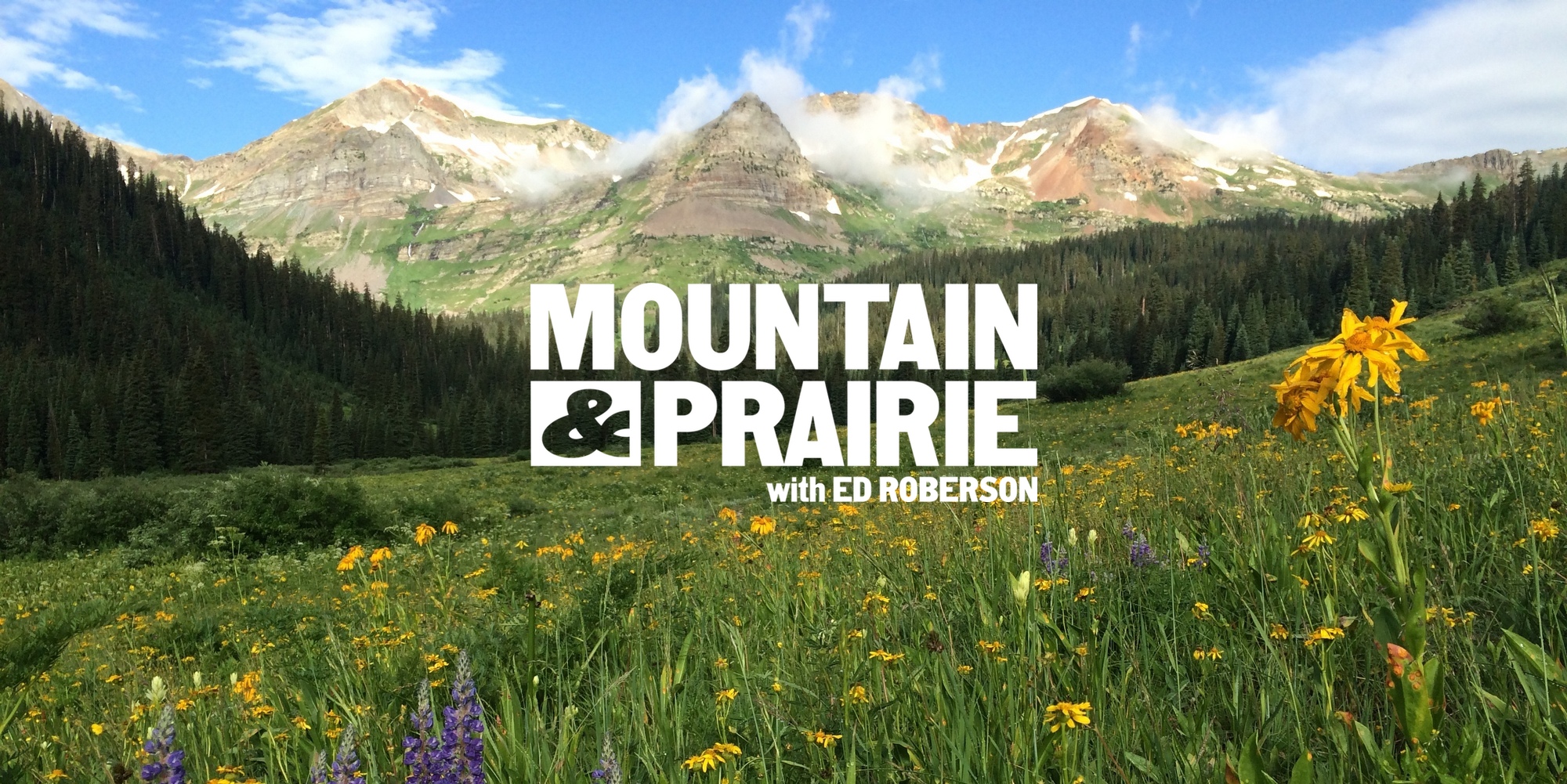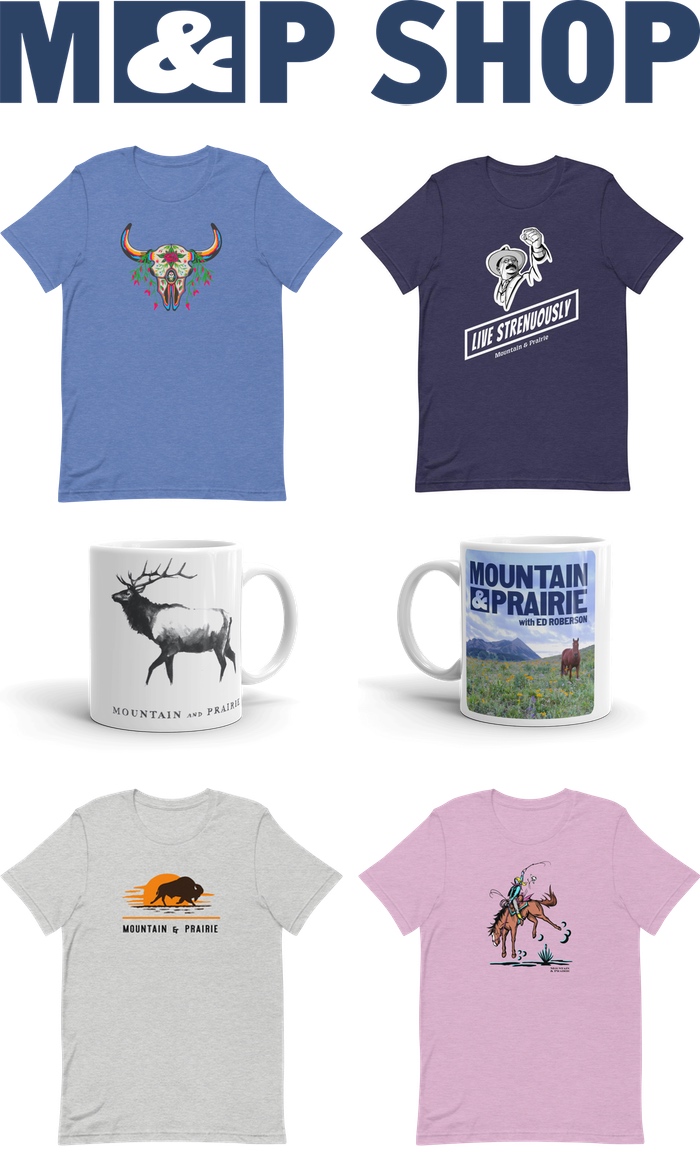Turnkey Ranches
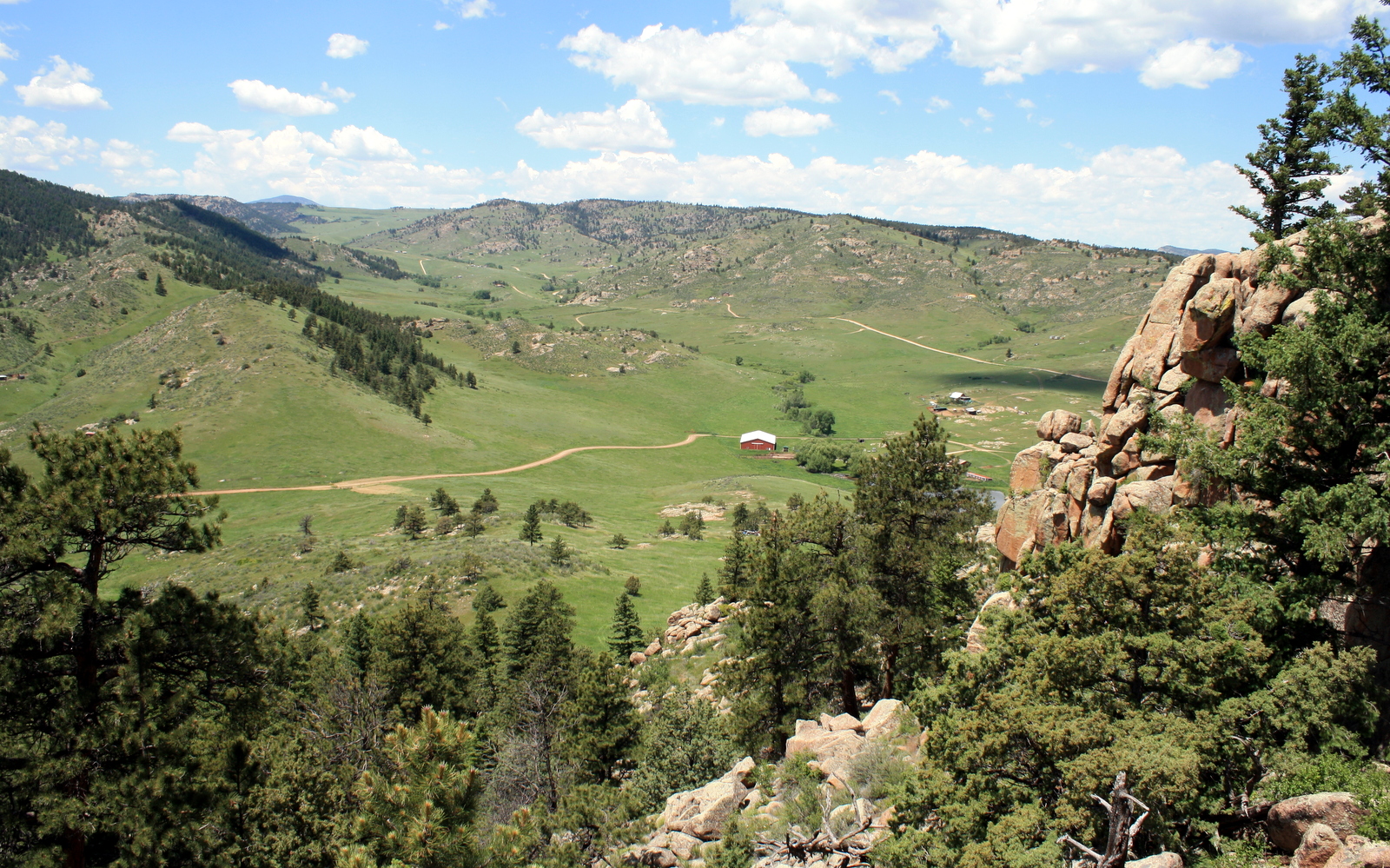
That’s turn-key, not turkey.
Anyway, there’s a lot to be said for buying a ranch that is in great shape and can be enjoyed immediately without a lot of extra cost and backbreaking labor. My new post on the Mirr Ranch Group blog explains:
The Appeal of a Turnkey Ranch
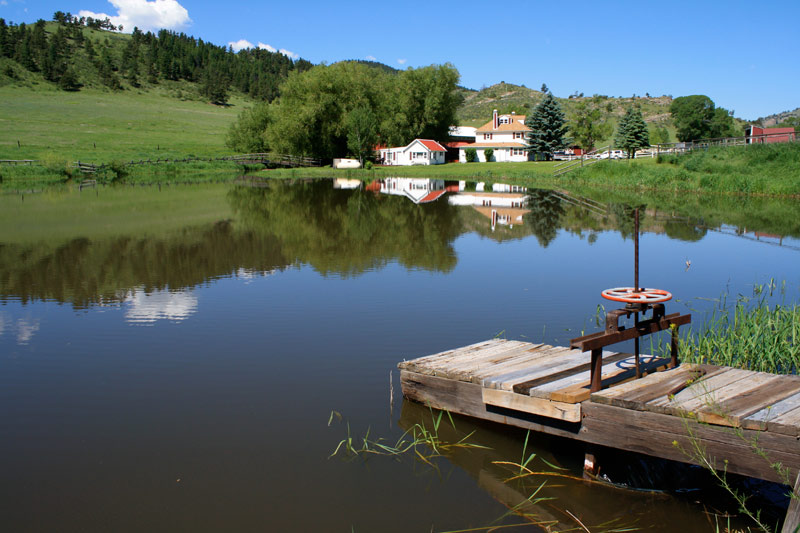
–
Beetles, Dead Trees, and Wildfires
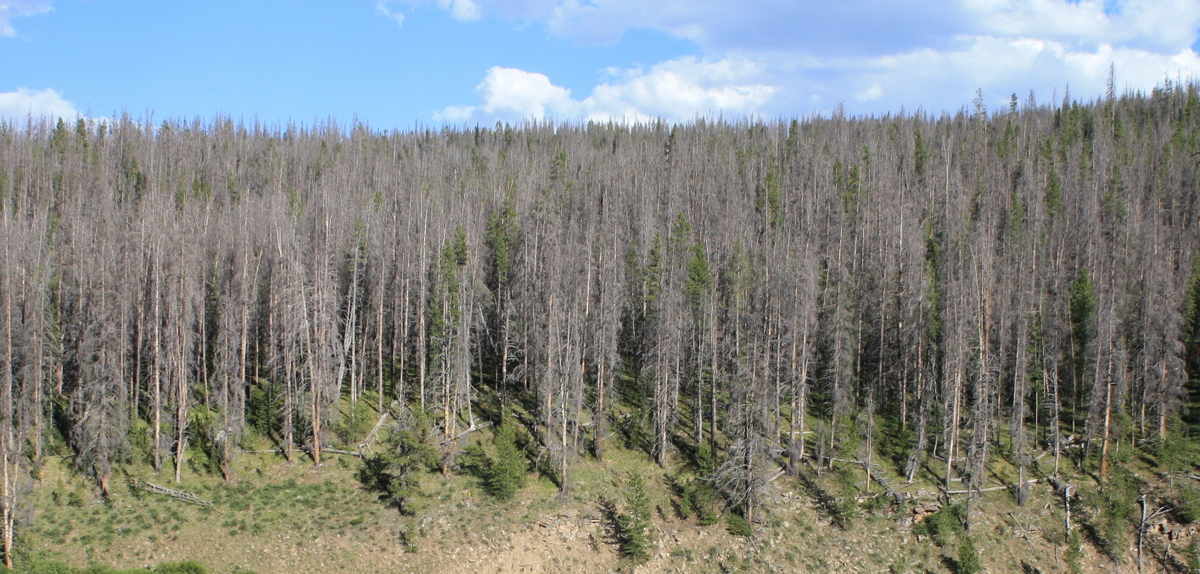
It seems to make perfect sense that a hillside of dead timber would be more susceptible to wildfires than a hillside covered with healthy, green trees, right? WRONG! Contrary to popular opinion, there’s a growing consensus among scientists that a forest of dead, beetle-killed trees is no more flammable than a healthy, thriving forest. To learn more, read my newest article on LandThink.com:
The Unexpected Relationship Between Bark Beetles and Wildfires
–
Conservation Easements – Six Common Misconceptions
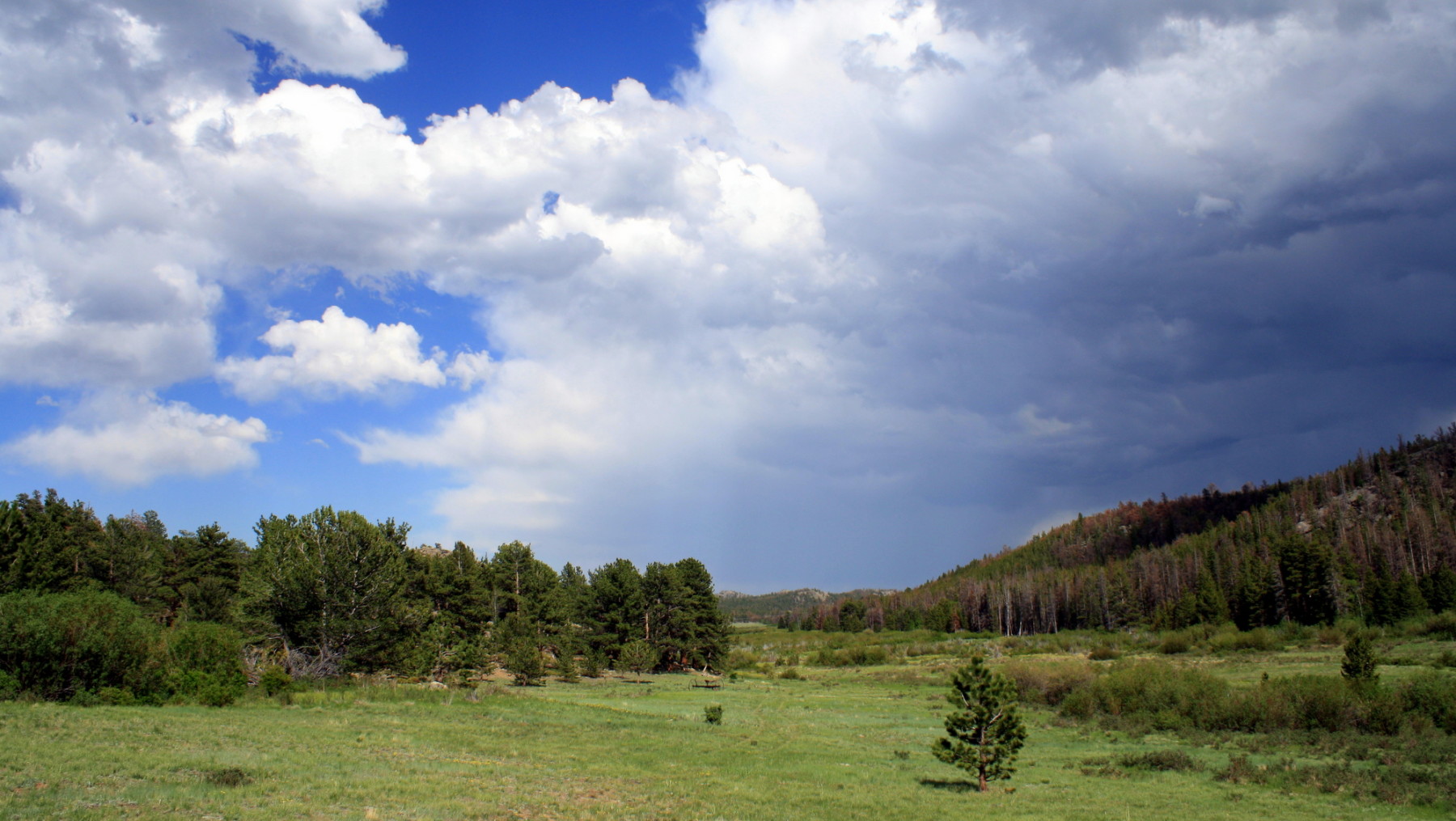
Despite the fact that conservation easements have been widely used as an effective land protection tool for decades, I still encounter a surprisingly large number of landowners and land buyers who are misinformed about the most basic aspects of the conservation easement process. Most of these people are smart, sophisticated, and highly knowledgeable about a wide range of land-related issues, but for some reason, conservation easements are a constant source of confusion.
Below, I list out a few of the most common misinformed objections that I hear time and time again, and, as you’ll see, all of these objections are based on an incomplete understanding of exactly how conservation easements work. But first, to make sure everyone is on the same page, let’s define exactly what a conservation easement is. The Land Trust Alliance defines a conservation easement as “a voluntary legal agreement between a landowner and a land trust or government agency that permanently limits uses of the land in order to protect its conservation values. Landowners retain many of their rights, including the right to own and use the land, sell it and pass it on to their heirs.”
Now, on to a few of the more common objections that I regularly hear, followed by my humble attempt to set the record straight. Usually, all of these objections begin with some version of “I’m not interested in conservation easements, because…”
“…I want my children to be able to build houses on the property.” Conservation easements are completely customizable depending on the landowner’s goals and plans for the property. The landowner decides how much potential development he is comfortable with and any other future needs (such as relatives’ use of the land), then he works with a land trust to draft an appropriate easement to meet his family’s goals. The scope of future development is the landowner’s choice—if he wants to designate building envelopes for future homes for his children, that’s allowable. If he wants to disallow construction of any kind, that’s allowable too. Whatever he chooses, it’s up to the landowner and land trust to work together to draft an easement that benefits all stakeholders.
“…I don’t want to allow public access on to my land.” Landowners are not required to allow public access as part of an easement. As discussed above, an easement is completely customizable depending on the needs of the landowner. While there are certain cases in which landowners choose to allow public access on to their property as a condition of an easement, these cases are the exception rather than the rule. When conserving a property, the landowner is forgoing future development rights on private property, not converting their land into a State Park for public enjoyment!
“…I don’t want the government involved with my land.” While there are cases in which government entities hold conservation easements, most easements are held by non-profit land trusts. These land trusts are classified as 501(c)(3) organizations, just like the Red Cross, American Cancer Society, or Boy Scouts of America. Another common term for these types of organizations is “NGOs,” or Non-Governmental Organizations. By working with a land trust, you are no more allowing the government into your personal affairs than if you choose to donate $1,000 to the Red Cross. Yes, the government and the IRS can scrutinize any tax benefits gained by donations to a non-profit, but that is the case with all charitable donations, not just donations to land conservation groups.
“…I don’t want the land trust constantly visiting my property.” As a condition of the conservation easement, land trusts must physically inspect the property to ensure that the landowner is upholding the terms of the easement. Best practices stipulate that monitoring must occur at least once per year, so landowners can expect an annual visit from a land trust representative. Under most circumstances, anything more than one visit per year would be excessive and a waste of land trust resources. A landowner considering an easement should establish all expectations up front, particularly when it comes to the frequency and details of monitoring visits. In my experience, reputable land trusts give plenty of notice and respect landowners’ wishes regarding the timing of monitoring visits, so this should not be an issue.
“…I need to keep my land in agricultural production.” Some of the most successful land trusts in the country specialize in working with farmers and ranchers to keep their land agriculturally productive, while also protecting it from irresponsible development. Again, conservation easements can be customized according to the landowner’s goals, so if a landowner wants to continue farming or ranching, then that can be arranged as part of the easement. An excellent example of an agriculture-centric land trust is the Colorado Cattlemen’s Agricultural Land Trust, which focuses exclusively on productive ranches and has protected over 450,000 acres of working land throughout Colorado. [On a personal note, I strongly believe that in the West, keeping ranches in production while also protecting against development is the most effective land conservation strategy–more on that here.]
“…I don’t have enough income to benefit from donating an easement.” For those landowners whose income is not high enough to justify the tax benefits, there are other options. If a parcel of land is of high enough conservation importance, land trusts will sometimes pay landowners for conservation easements. Using a combination of private donations and grants, land trusts can buy the development rights from the landowner, putting cash in the landowner’s pocket (versus tax credits and/or deductions that could go unused). Easement purchases are more rare than donations and the process can take longer, but they are a viable option for many important properties. Also, in some states including Colorado, conservation tax credits can be sold for cash, giving the landowner a way to monetize his donation while providing tax relief to high-income third parties who are willing to buy the credits at a slight discount.
—–
Conservation easements are complex documents with innumerable moving parts, and it’s important that landowners fully understand all of the legal implications and risks prior to moving forward with the process. For buyers interested in purchasing protected land, it is vitally important to investigate all details of the easement and know how it will affect the future land uses and values. Conservation easements are “in perpetuity,” so decisions related to them must be thoroughly considered, as they are about as permanent as you can get in the world of real estate.
While conservation easements are one of the most effective tools currently available for protecting land, they are not appropriate for all situations. My goal here is not to convince you that conservation easements are the perfect solution for every farm, ranch, or property in the country—I strongly disagree with that idea. A conservation easement is a very specific tool with a very specific purpose that is appropriate in certain cases, for certain landowners. It’s up to each landowner to seek unbiased, experienced guidance when considering the pros and cons of protecting his or her property.
As for the specific legal and tax implications, I’m not a lawyer or accountant and don’t play one on the internet, so be sure to seek appropriate counsel when sorting through the minutia of conservation easements. If you’re in the Rocky Mountain West, I’ve got a long list of talented attorneys and accountants that I’m happy to recommend.
6 Articles + 1 Video for the Snowy Weekend
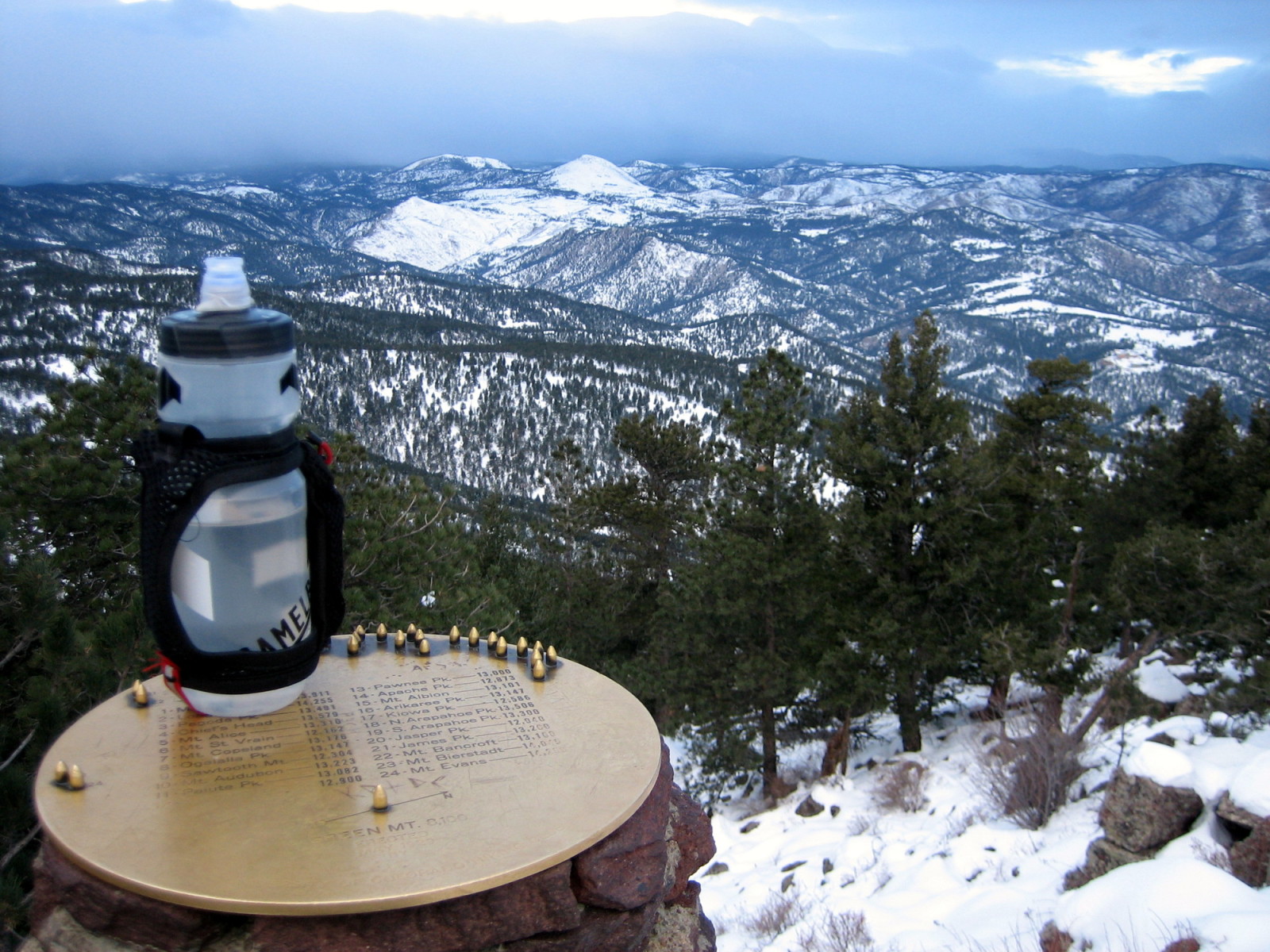
- ‘Unbranded’ Sheds Light on Wild Horse Issues in the West, Outside Magazine – I had not heard of this film before stumbling across this article, but I’m hoping to watch it in the coming weeks. The article delves into many of the issues that I find interesting – adventure, ranches, political issues about western land – so I have high expectations for this film.
- How Two Filmmakers Cracked the World’s Most Bizarre Trail Race, Outside Magazine – After reading the article above, I fell down the rabbit hole of linked sidebar stories and saw this one. I love running long trail races, but the Barkley Marathons is crazy even by my skewed standards. Also, I’m always intrigued when filmmakers can make running through the woods for 30+ hours interesting, so I’m excited to check out this film soon.
- Stewardship with Vision, Western Landowners Alliance – Western Landowners Alliance is a cutting-edge organization and an excellent resource for all things related to ranches, land ownership, and issues in the West, and I highly suggest signing up for their email list. They periodically release informative videos about their work, and this is the latest one. Very well produced and informative.
- Town Milk Put Tarboro on the Map, Our State Magazine – My wife came across this article from Our State Magazine, a great publication that focuses on unique, upbeat stories from our home state of North Carolina. This one focuses on one particular aspect of my hometown of Tarboro and even has a quote from my grandfather, who was the longtime mayor and town doctor.
- Why You Should be Talking About Work All Holiday Season, Ryan Holiday – One of my pet peeves is when I meet people who get annoyed when I ask them what they do for work. Most of us spend at least half of our waking hours working, so why wouldn’t we want to talk about it? Maybe their work is mind-numbingly boring, they’re no good at it, or possibly a combination of both. Ryan Holiday, an extremely smart author and thinker, tackles the subject.
- This is Your Brain on Nature, National Geographic – I’m a firm believer that spending time outdoors is good for everyone, whether you’re running 100 miles or simply sitting on a bench in a park. Proximity to open space and nature is one of the main reasons I live here in Boulder, three blocks from the trails. The article examines this idea in full NatGeo style, with a thorough analysis and stunning photos.
- Deconstructing urgent vs. important, Seth Godin – Wisdom from Seth.
Go Broncos! Go Panthers!
Weekend Reading (or Watching or Listening)
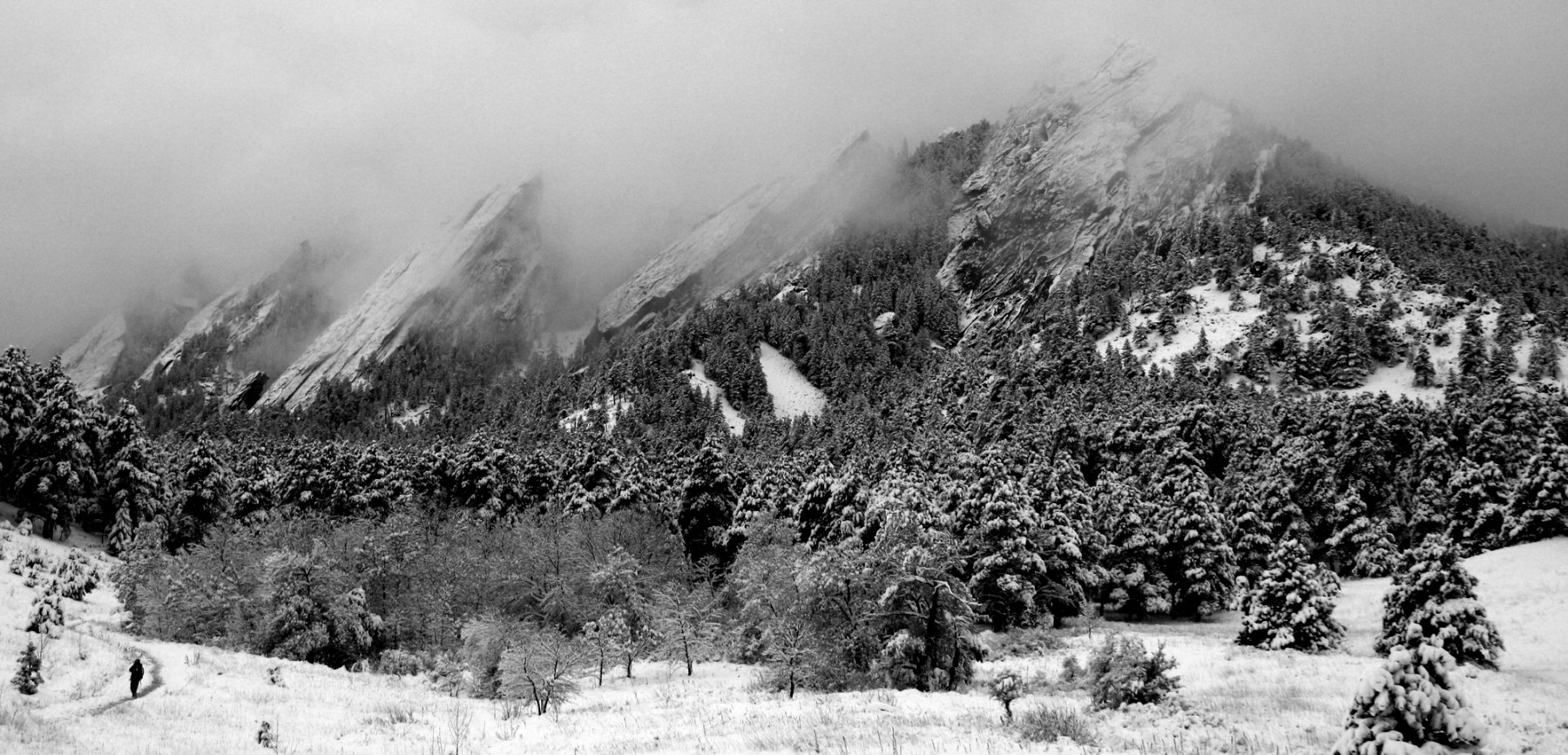
Hopefully you’re outside doing something fun this weekend, but, on the off chance you are sitting around staring at your computer, here are a few worthwhile articles, videos, and podcasts that I’ve enjoyed over the last week or so:
- The Disappearing Colorado River, New Yorker Magazine – I was prompted to reread this article this week, because it profiles Kent Hollsinger, a Denver attorney who will be the guest speaker at next month’s Colorado Ag Network event. A well written piece that gives a good overview of some of the challenges facing the West, specifically related to water.
- Where Private Land Meets Public Interest, High County News – One of my favorite topics is understanding how private landowners can work together to conserve and protect large swaths of western lands and ranches. This article describes some innovative efforts on the Colorado-New Mexico border, and it’s definitely worth a read.
- Bird-Watching, Patriotism and the Oregon Standoff, New York Times & The Western Land Revolt, Wall Street Journal – Two opinion pieces from two publications on two opposite ends of the political spectrum. Interesting thoughts on the ongoing rancher standoff in Oregon. (Incidentally, I noticed that the author of the NYT piece was a teacher at my high school back in the mid-90s.)
- Elkhorn Ranch gravel pit nears development as longstanding dispute continues, Grand Forks Herald – Updates on the ongoing saga just outside Theodore Roosevelt’s Elkhorn Ranch. I’m still amazed that the people handling the transaction weren’t more thorough about understanding the property’s mineral rights.
- To Those Who Loved Doug, The Cleanest Line (Patagonia’s blog) – This article is just over a month old, but is the best I’ve read so far about Doug Tompkins’ tragic death in Chile. Written by Rick Ridgeway who was with Tompkins on the kayaking trip, it’s an informative description of the accident, as well as a moving tribute by a great friend. (For more on Doug, watch 180 South, described in this post)
- The Scariest Navy SEAL Imaginable…And What He Taught Me, Tim Ferriss Show – Given the ridiculous amount of driving I do, I listen to tons of podcasts, and The Tim Ferriss Show is consistently one of the best. In this episode, he interviews former Navy SEAL Jocko Willink who, by any measure, is a total badass – tough, smart, focused, disciplined, loyal… the list goes on and on. Jocko actually just started his own podcast, which is sure to be excellent.
- Kissing the Rock – Official Trailer – One of my life goals is to run the Hardrock 100–100 miles, 34,000 feet of vertical, over a 14er, and through some of the most spectacular landscapes in the world. This is the trailer for an upcoming film about the race, which I can’t wait to see. (Here’s another good 10-minute film about the 2013 race.)
- Big Horn Sheep – Yosemite Nature Notes – Yosemite National Park has a Youtube channel and regularly produces high-quality, informative short videos about different aspects of the Park. This is the most recent film about big horn sheep, their history in the park, and efforts to reintroduce them in areas of the Park.
- And, in case you missed them, two of my most recent articles Seven Must-Read Books on Land, Ranches, and the History of the American West, LandThink.com & Fly Fishing Adventures in the Vail Valley, Mountain Khakis’ blog.
Fly Fishing Adventures in the Vail Valley
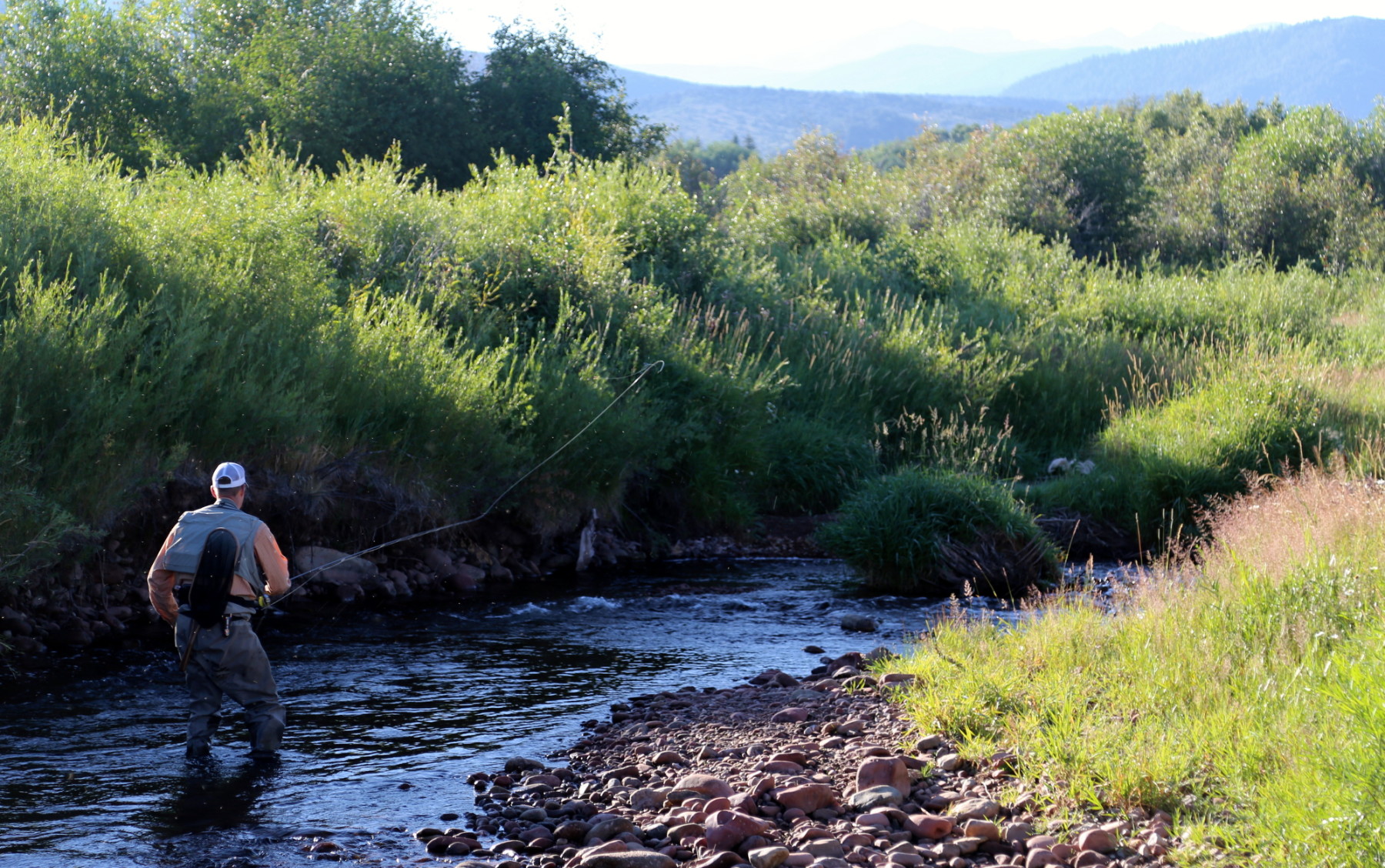
Head over to the Mountain Khakis blog to read my latest blog post “Fly Fishing Adventures in the Vail Valley,” where I discuss some of the unbelievably fun fishing on Hardscrabble Mountain Ranch. As you’ll read, the ranch’s 2.5 miles of Brush Creek is some of the most coveted private water in the Vail Valley, and it has rarely been fished. The combination of its healthy riparian ecosystem and lack of fishing pressure makes it a unique, productive, and fun brown trout fishery.
Fly Fishing Adventures in the Vail Valley
Also, if you haven’t already, check out the 4-minute video we produced about fishing on the ranch. We follow a local guide as he fishes the creek for the first time and manages to snag a beautiful, nice-sized brown.
LandThink: 7 Must-Read Books about the American West
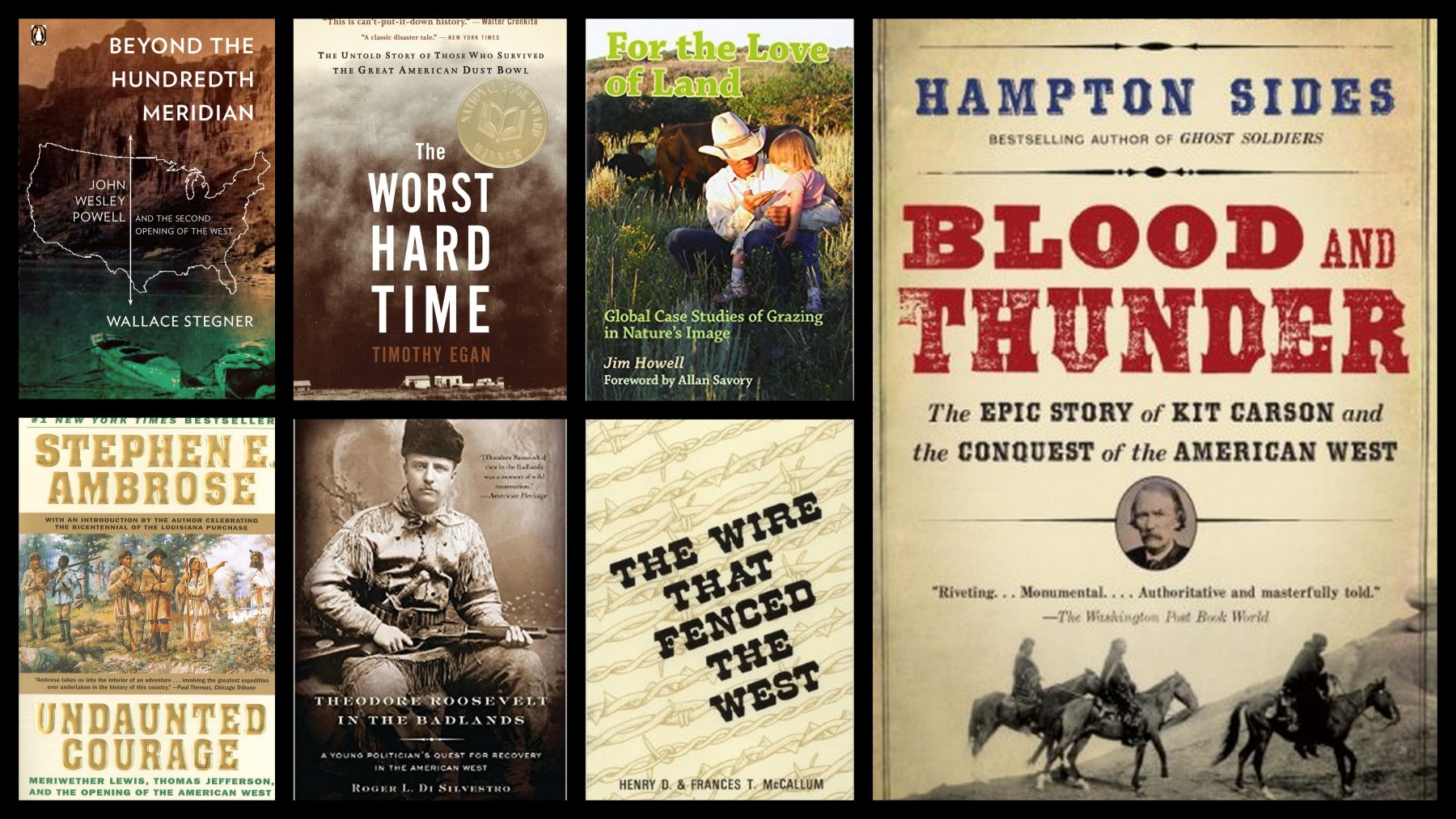
Be sure to check out my newest post on LandThink.com, a list of some of my highly recommended books related to land, ranches, and the American West. If you receive my bi-monthly book recommendations or frequently read this blog (i.e. you are my wife), some of these titles will be familiar. But I did throw in a few previously unmentioned titles to keep it interesting.
Read the post, sign up for my email list, and keep sending me book recommendations!
Seven Must-Read Books on Land, Ranches, and the History of the American West
—
Why Would Anyone Want to Run 100 Miles?

“Why in the hell would you choose to do that?”
That’s a question I get a lot when the topic of my interest in endurance sports comes up in conversation. Surprisingly, even after years of enjoying a triathlons, climbing big mountains, and running 50 and 100-milers through the Colorado backcountry, I still don’t have a satisfactory answer.
This recent article in the New Yorker does an excellent job presenting a few possible ideas as to why people decide to push themselves so hard and so far for “fun.” I found the second half of the article to be more applicable than the first, but it’s a quick read, so check it out:
The Spiritual Life of the Long-Distance Runner
(Unfortunately, I still don’t have a solid, succinct answer to why I choose to put myself through some of this nonsense!)
Top Ten Documentaries for Adventurous, US History-Loving, Ranch Conservationists
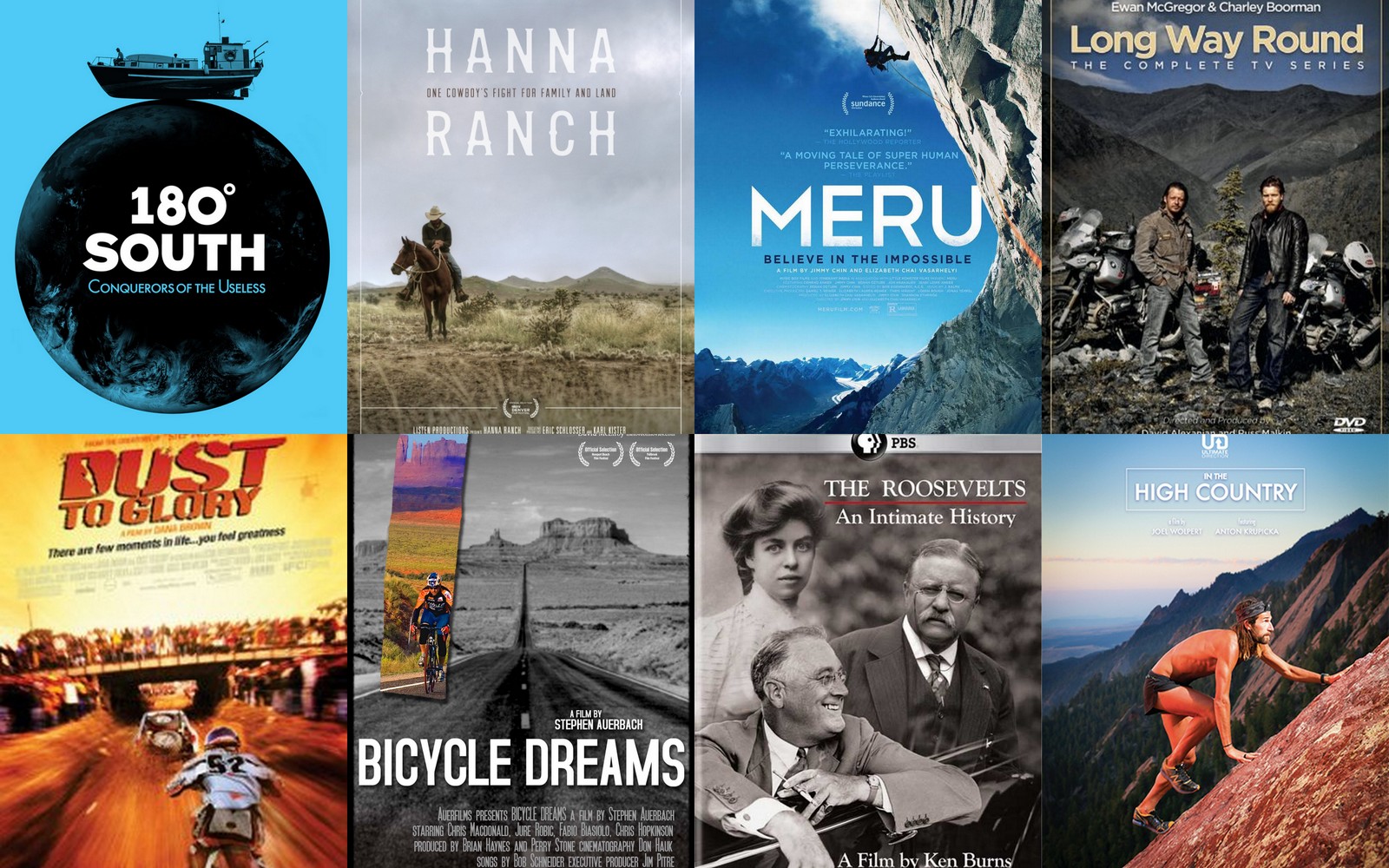
Long Way Round – The concept is simple: Actors Ewan McGregor and Charlie Boorman ride their motorcycles from London to New York…. going east. The resulting 19,000 mile adventure was made into a relatively low-budget, 10-episode British television series, which turned out to be one of my favorite adventure documentaries of all time (and I’ve watched it multiple times). Over the course of four months, Ewan and Charlie break down, get lost, are hassled by border agents, meet crazy/dangerous locals (including an apparent mafia leader who gets drunk and shoots off a machine gun), wreck their bikes, and have every other kind of adventure you’d expect on such a hardcore trip. I’ve got endless respect for anyone who can pull off an adventure likes this, particularly an A-List movie star who spends a lot of time surrounded by soft, Hollywood types. Several years later they produced Long Way Down, about another motorcycle trip from Scotland to South Africa. Not as great as Round, but still worth watching.
Do you know of any good documentaries that I should check out? If so, let me know by leaving a comment below!
Low Supply & High Demand in Eagle County, Colorado
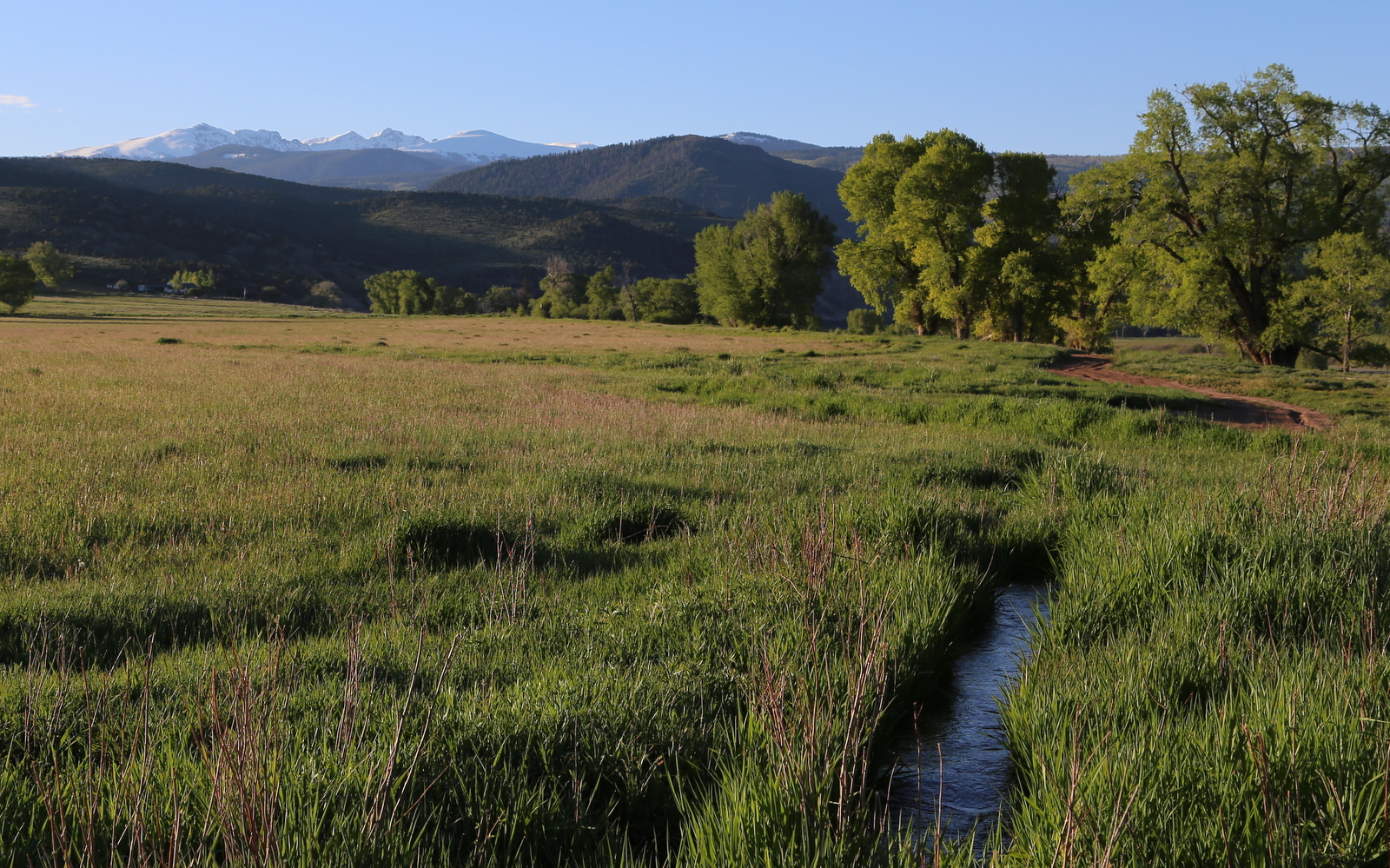
Compared to the other major resort counties in Colorado, Eagle County, home to Vail and Beaver Creek, has the largest and fastest growing population. The attractive demographics combined with a low supply of private land have created conditions ripe for significant appreciation in real estate values. Given Hardscrabble Mountain Ranch’s location just outside the county seat of Eagle, the ranch offers considerable financial upside for investment-minded buyers. Check out my new blog post to learn more:
The Upside of Ranch Investment in Eagle County
Valuing Legacy Ranches
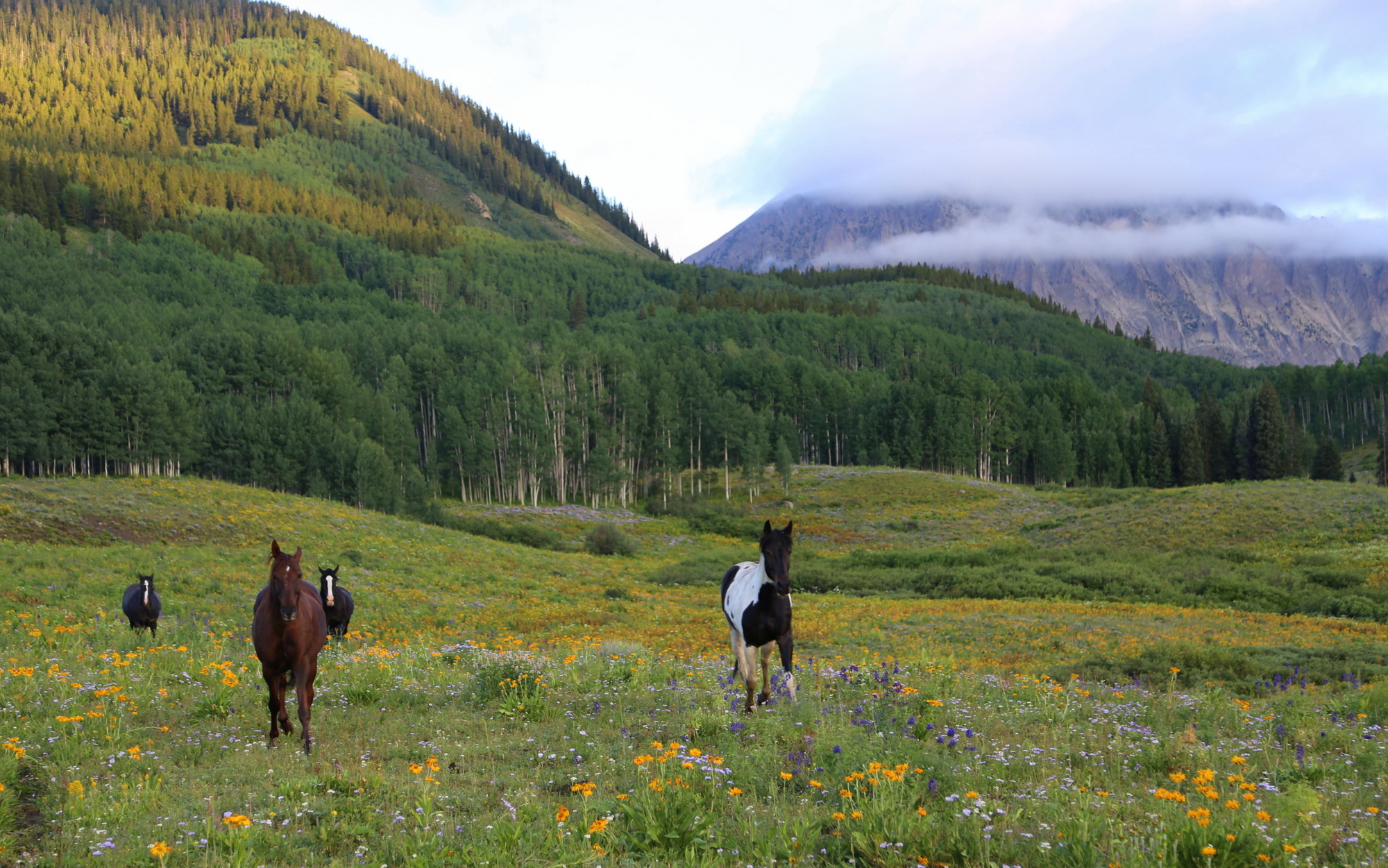
The ability to accurately value a legacy ranch despite the inherent market inefficiencies is one of the most important, yet most poorly executed, aspects of a ranch broker’s job. My new article on LandThink.com discusses the importance of quantifiable data and reasonable assumptions when valuing one-of-a-kind, legacy ranch properties:
Valuing One-of-a-Kind Legacy Ranches
Covenants and Restrictions on Ranches
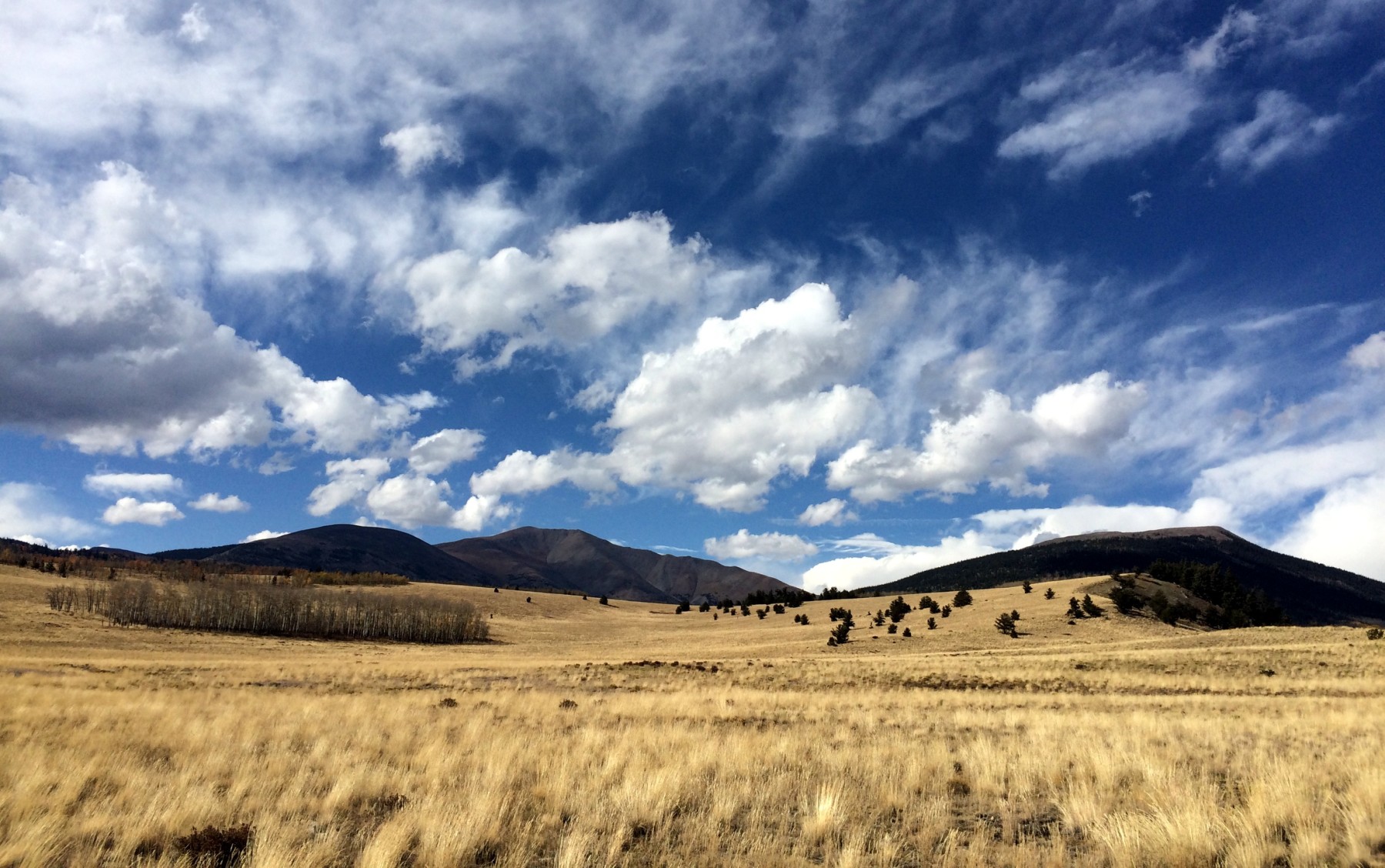
A few weeks back, I posted an article on the Mirr Ranch Group blog about the pros and cons of ranch properties that have covenants and restrictions. While covenants on true legacy ranches are somewhat rare, they still pop up from time to time. Follow the link below to learn more:
Covenants and Restriction on Ranches
LandThink article

A few weeks ago, the folks behind the popular website LandThink contacted me asking permission to republish my responsible grazing article from LinkedIn. It’s good to know that at least a few people are reading these articles! A link to the LandThink article is below, and I’m planning to write more for the site in the future, so stay tuned.
LandThink – Responsible Grazing
NEW VIDEO – Brush Creek Fishing
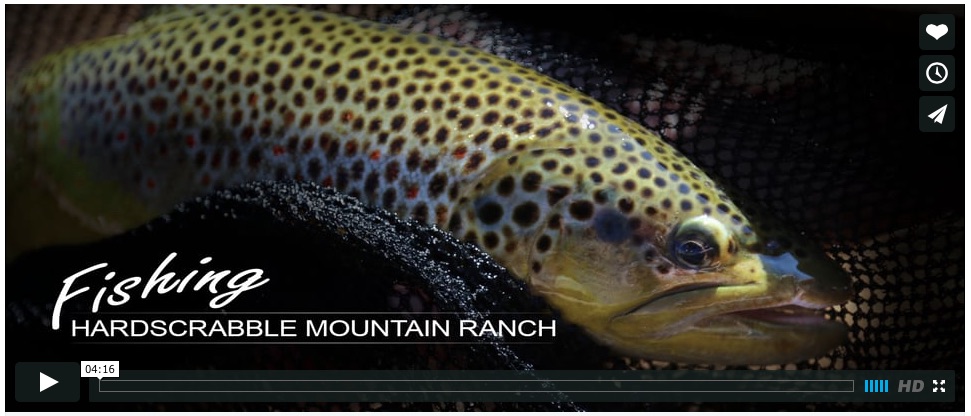
We just released our new video for Hardscrabble Mountain Ranch that focuses exclusively on the ranch’s private fishing. It was a blast to film, and I think it came out well. Enjoy!
Fly-Fishing on Brush Creek
Brush Creek Browns
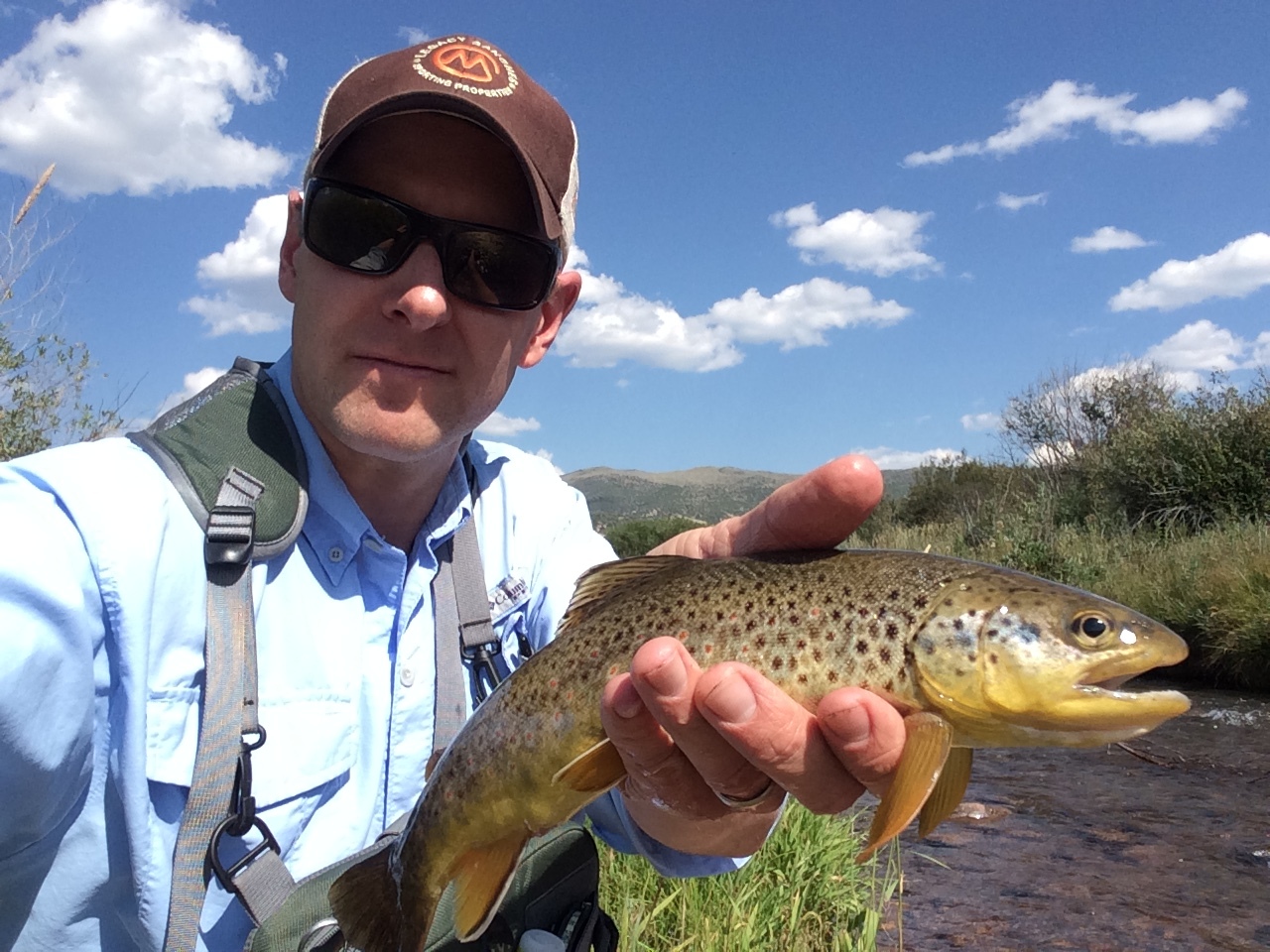
Yesterday, I was up in Eagle County touring some clients around Hardscrabble Mountain Ranch. After the tour, I was able to spend a little over an hour on the ranch’s private water – 2.5 miles of Brush Creek- before heading back down the hill. It was perfect late summer fishing – a clear, breezy day with lots hoppers everywhere and hungry brown trout. Read the full report over on the Mirr Ranch Group blog:
Hardscrabble Fishing Report
Responsible Grazing
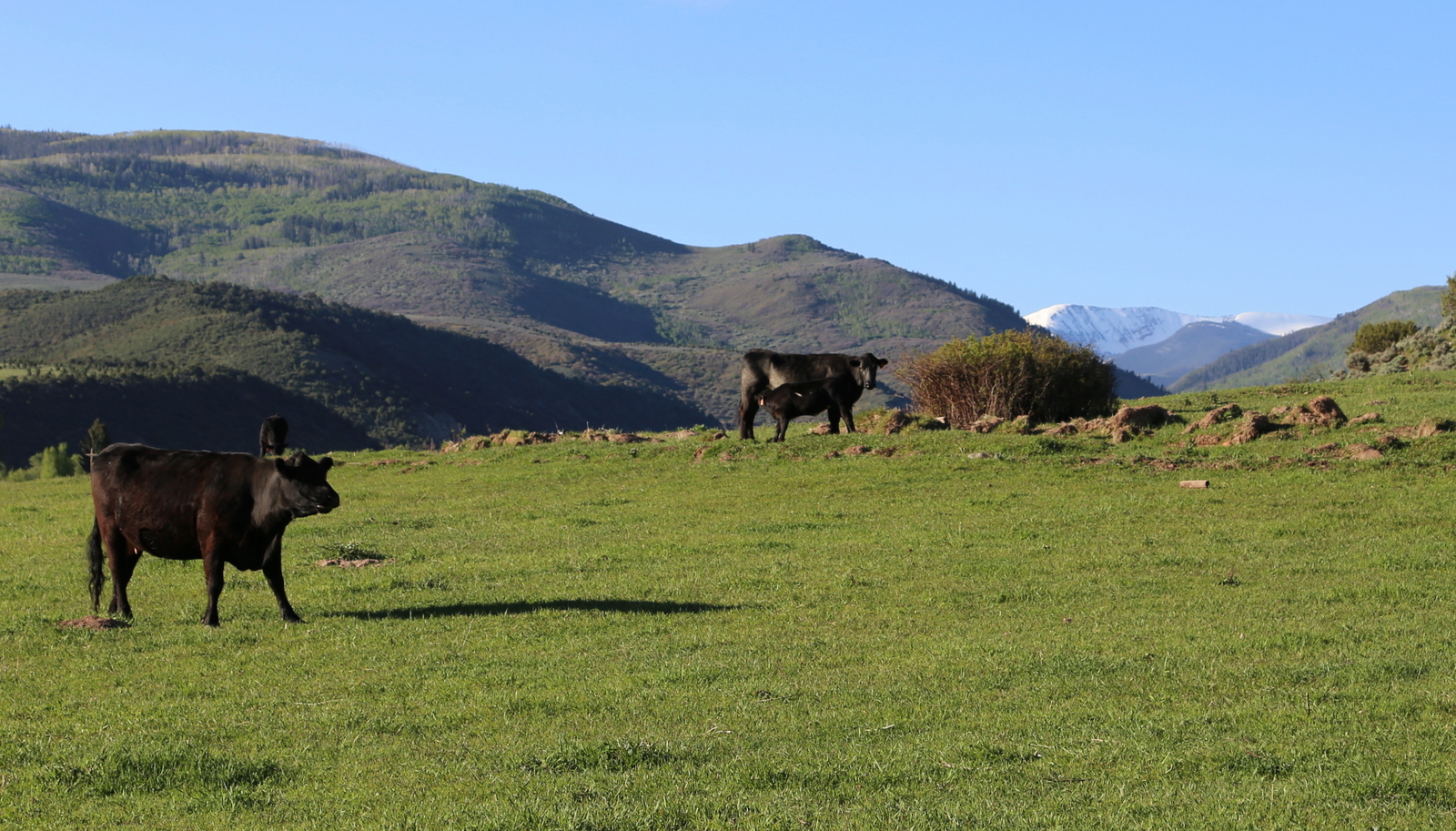
I just posted an article on LinkedIn about the importance of grazing on ranches in the American West. Some non-ranching landowners and ill-informed “conservationists” believe that the best way to improve a ranch’s habitat is to remove all animals and let it grow wild. Research has proven, however, that responsible grazing is a much more effective tool for building a healthy, strong ranch ecosystem. Check out the article to learn more:
Responsible Grazing – The Foundation of a Healthy Ranch Ecosystem
CCALT Harvest Dinner
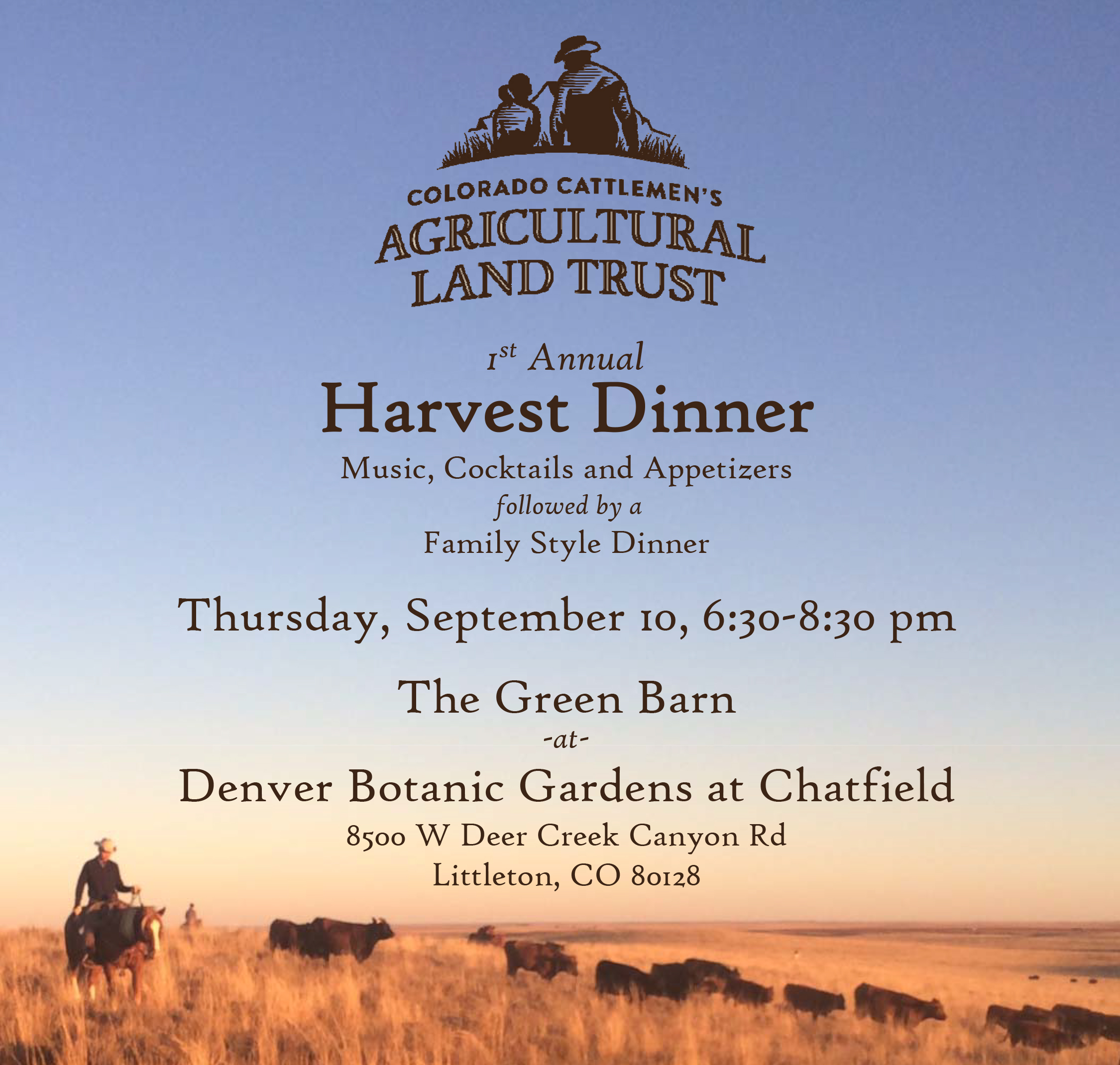
Mark your calendars for the Colorado Cattlemen Agricultural Land Trust’s 1st Annual Harvest Dinner, which will be taking place on Thursday, September 10th at the Denver Botanical Gardens at Chatfield. It is sure to be a fun evening with interesting people, all supporting a very important cause. Follow the link below for more information and to purchase tickets:
1st Annual Harvest Dinner
Summer News from Crested Butte
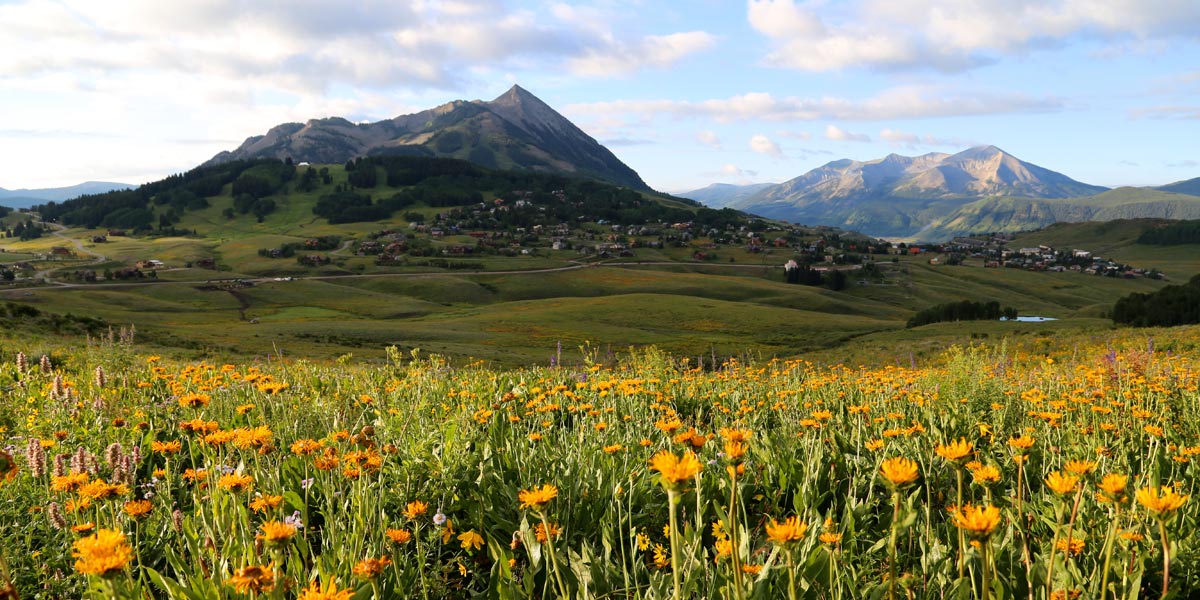
It’s been a busy summer in Crested Butte: Recently announced plans to expand the ski area by 500 acres, new direct flights, and an epic wildflower season. Head over the the Mirr Ranch Group blog to read more:
Exciting Summer News from Crested Butte, Colorado
Rocky Mountain Road Trips
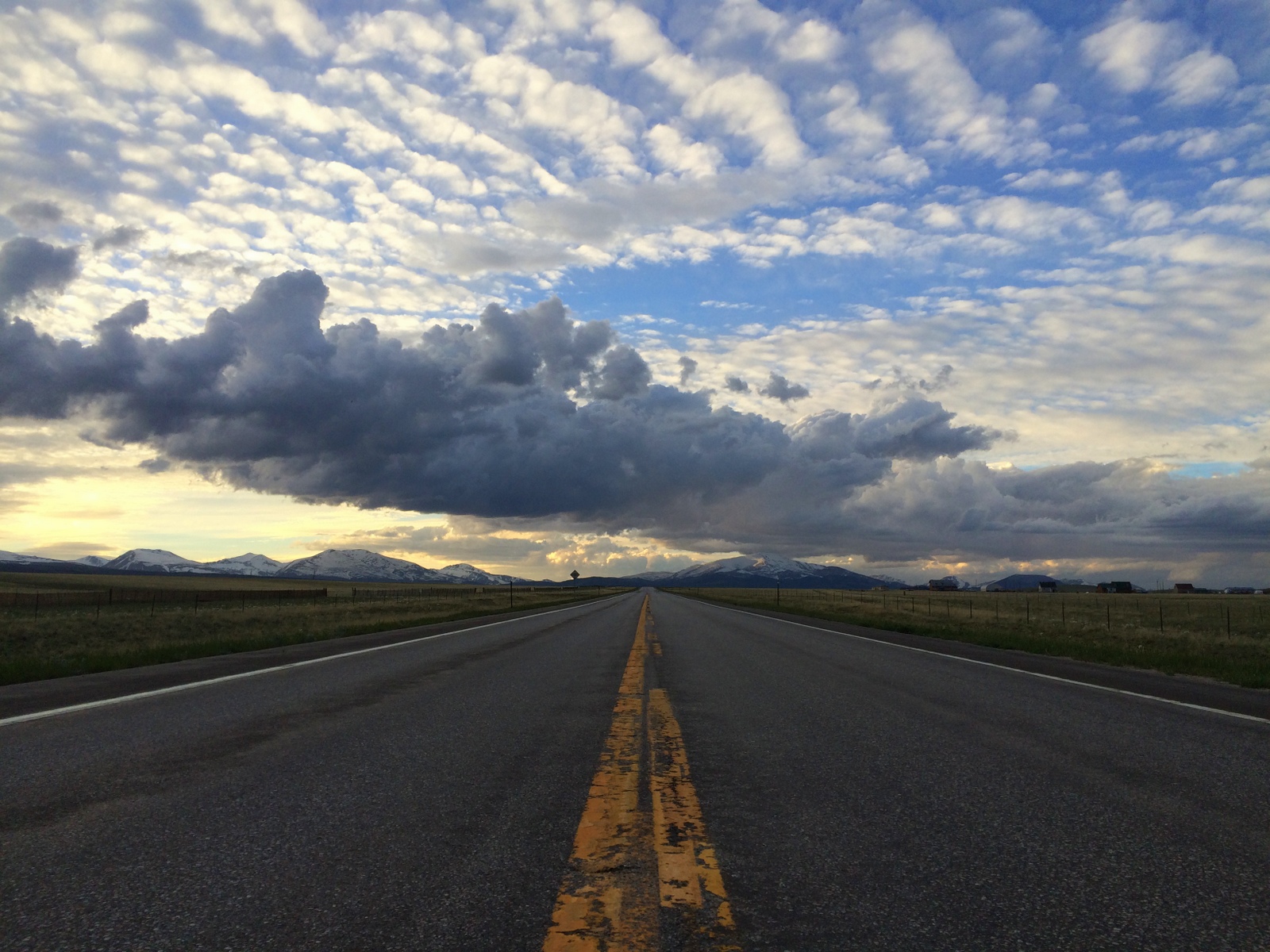
Mountain Khakis just posted my most recent blog post, which details a few of my favorite road trips throughout the America West. Click below to give it a read, and then buy pick up a few pairs of pants… these are my favorites!
Rocky Mountain Road Trips
—
Forever Colorado Video
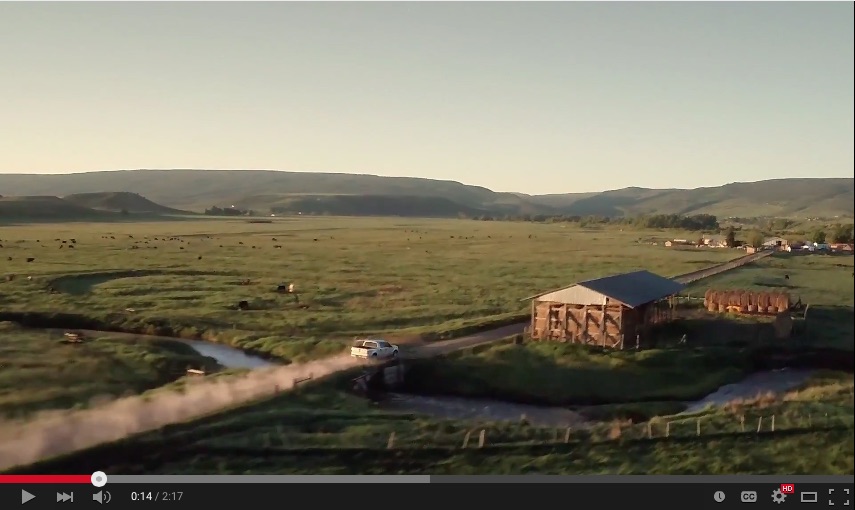
Check out Colorado Cattlemen’s Agricultural Land Trust’s new Forever Colorado video, showcasing some of the ranches and open spaces that make Colorado such a great place to live.
I was lucky enough to be interviewed and filmed as part of the project, and, despite my southern accent, I ended up narrating a good bit of the video.
Watch it below and consider making a donation to CCALT to support their important work: https://ccalt.org/donate/forever-colorado/
Flat Rock Ranch

On the Mirr Ranch Group site, you can find more information on my newest listing: Flat Rock Ranch. Located just northwest of Fort Collins in the Larimer County foothills, it is a very unique and picturesque Rocky Mountain retreat. The photo above was taken from the high rocky cliffs above the ranch, which is part of the adjoining Cherokee State Wildlife area. For more information and photos, head over to the ranch webpage:
Flat Rock Ranch
Hardscrabble Video
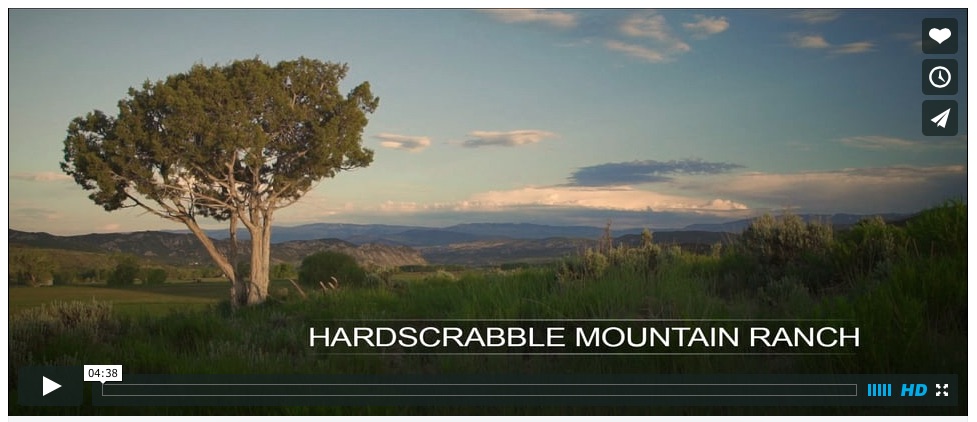
I’m excited to finally release the new promotional video for Hardscrabble Mountain Ranch! After two long days of filming, one crashed drone, dodging two intense lightening storms, and lots of false casts with my fly rod, the video is complete. Special thanks to Will Fowler at Camera Head Media for all his hard work and artistry– I think the video tells the story of the ranch perfectly!
Monster Mule Deer
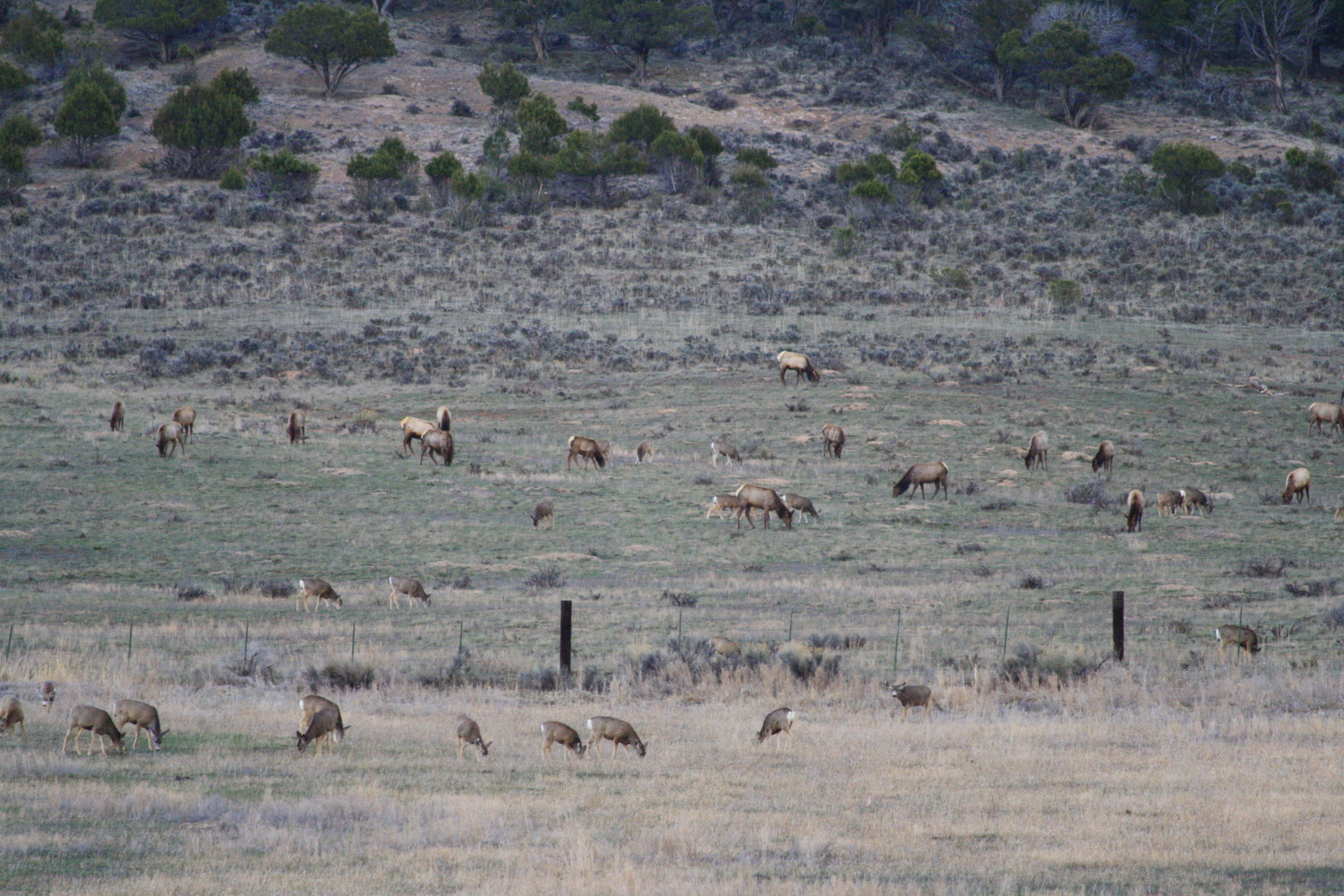
My most recent post on the Mirr Ranch Group blog details the hunting opportunities on Hardscrabble Mountain Ranch, specifically for the trophy mule deer that reside on and around the ranch. The ranch is located in GMU 44, a hunting unit that is carefully managed to produce very large trophy deer. And the management has been very effective– only one other area in all of North America has produced more Boone and Crockett trophy mulies. Follow the link below for detailed information and photos of monster mule deer!
North American Mule Deer Hunting at Its Finest – Hardscrabble Mountain Ranch
Access Issues on Ranches
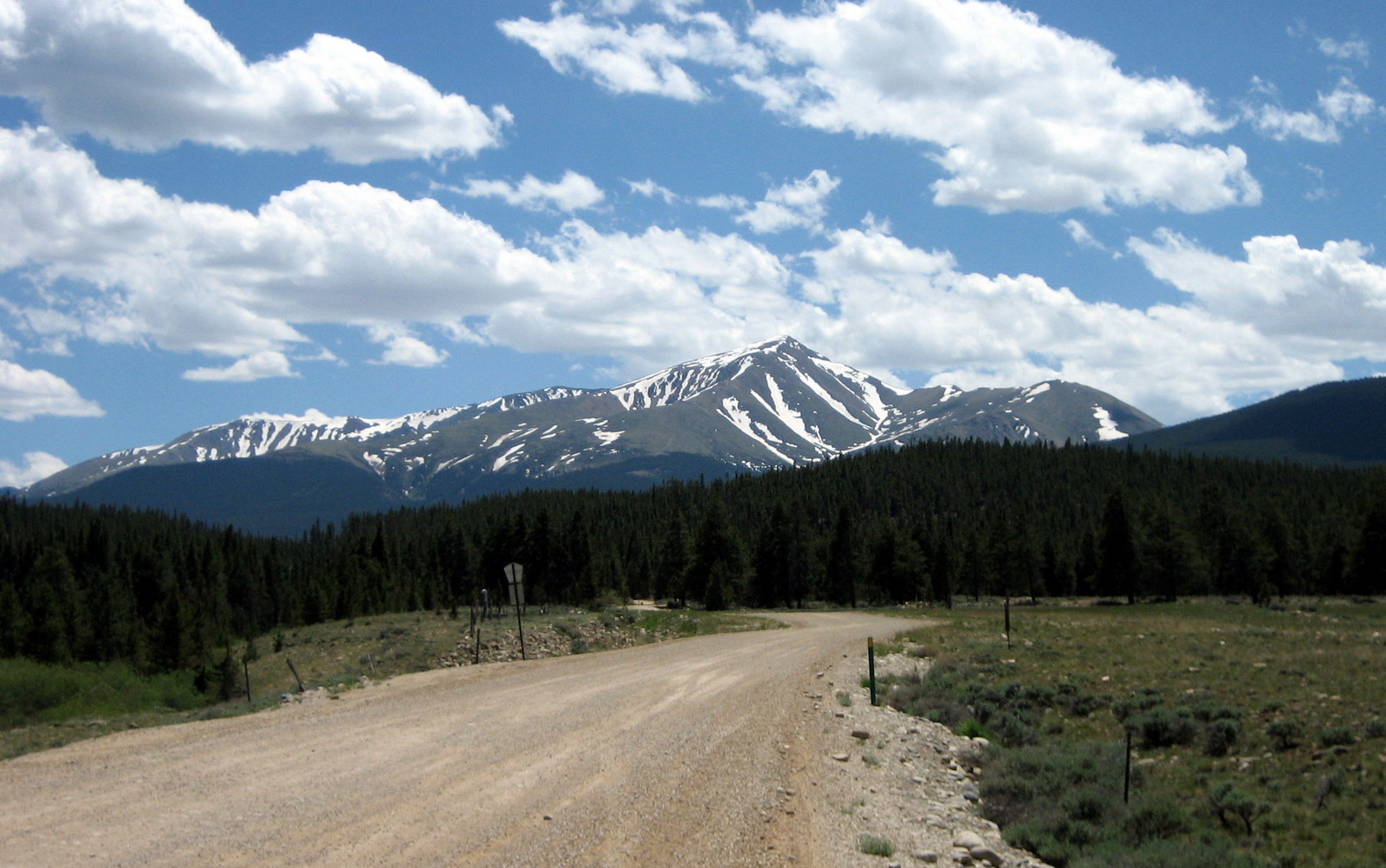
I recently wrote a new post on the Mirr Ranch Group blog about access issues on ranches. It may seems like a somewhat boring and dry subject, but it is vitally important to fully understand access, especially on some of these rural, remote ranches. Failing to research it properly could be a very expensive mistake:
Ranch Due Diligence – An Overview of Access Issues
—
CCALT’s Forever Colorado Campaign
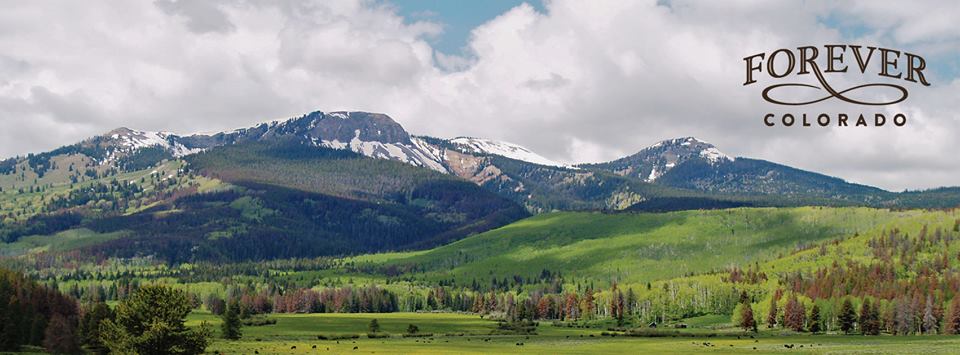
The folks over at the Colorado Cattlemen’s Agricultural Land Trust (CCALT) recently asked me to write a blog post introducing their “Forever Colorado” campaign, and also explaining why I choose to invest my time and resources into the vital work they are doing throughout the state. Click below to learn more about the organization, and please consider supporting CCALT’s important conservation efforts.
CCALT’s “Forever Colorado”
—
Conservation + Responsible Development = Centaur Meadows
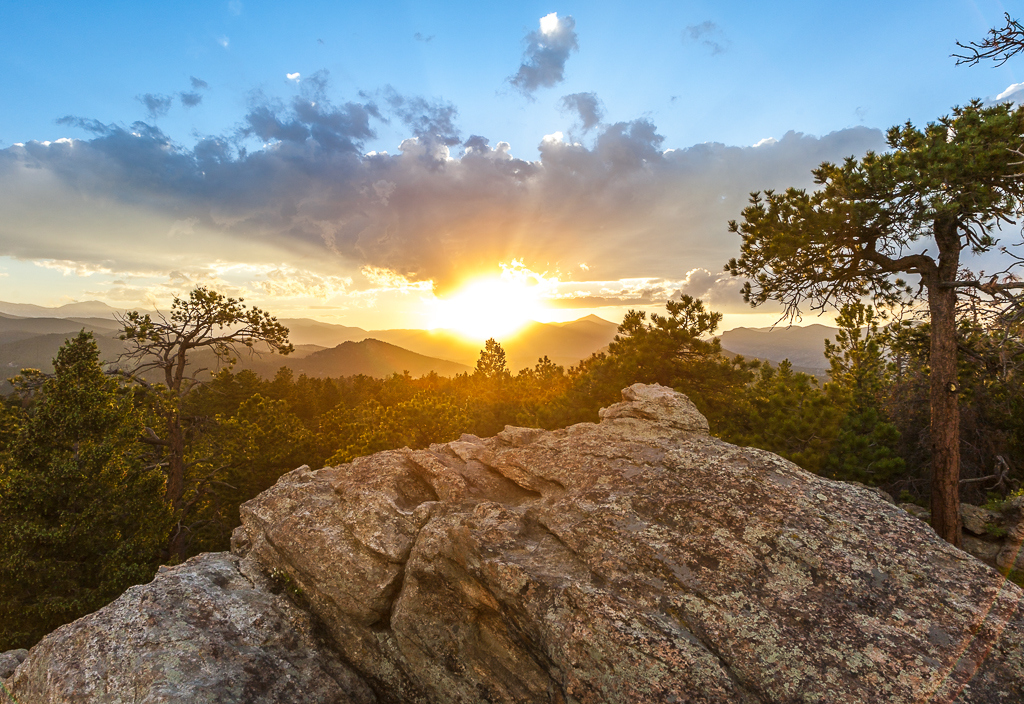
My newest Mirr Ranch Group blog post digs into the details of my Centaur Meadows Ranch listing–Specifically about how the ranch strikes a perfect balance between conscientious land stewardship and profit potential through responsible development.


